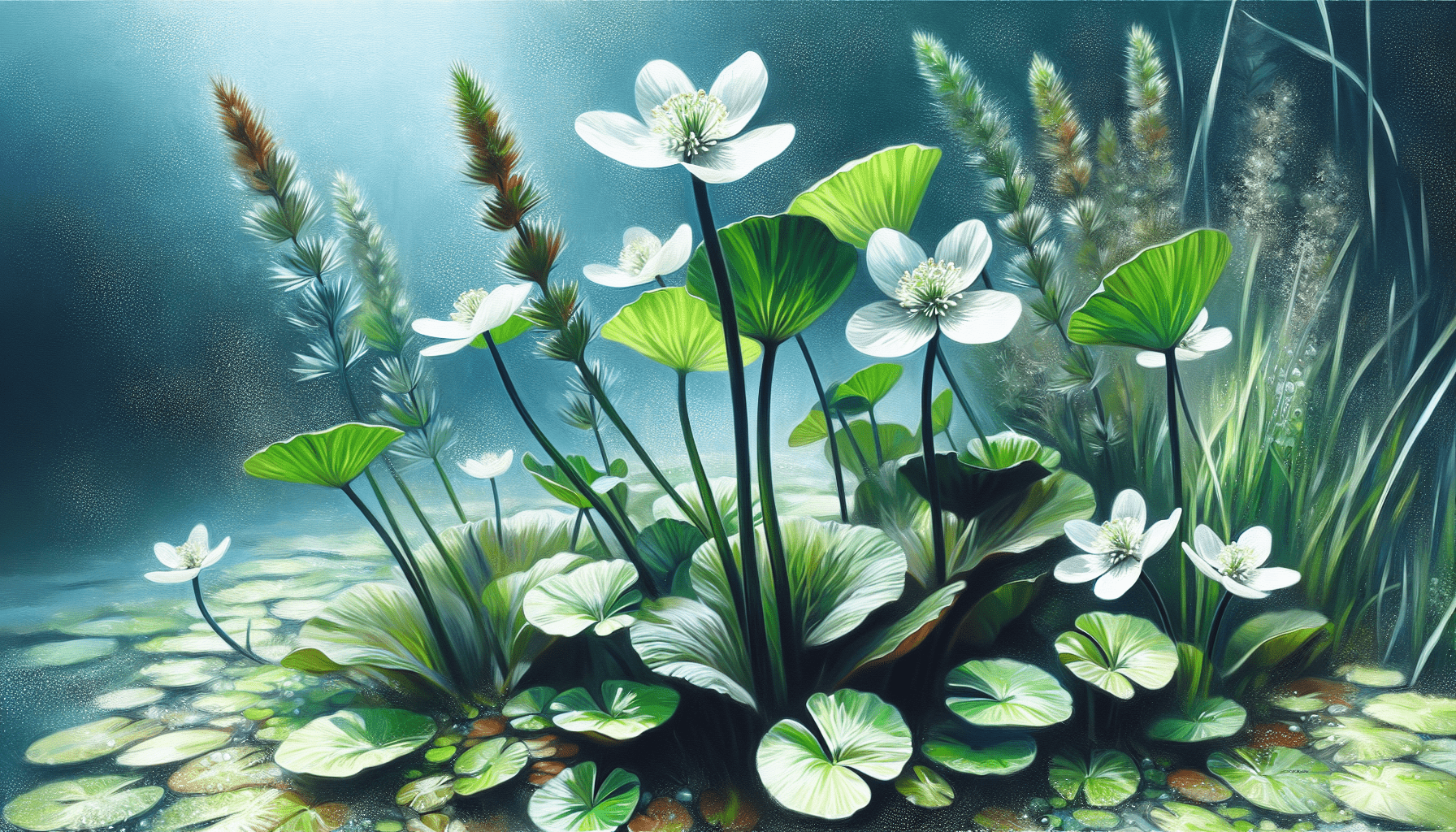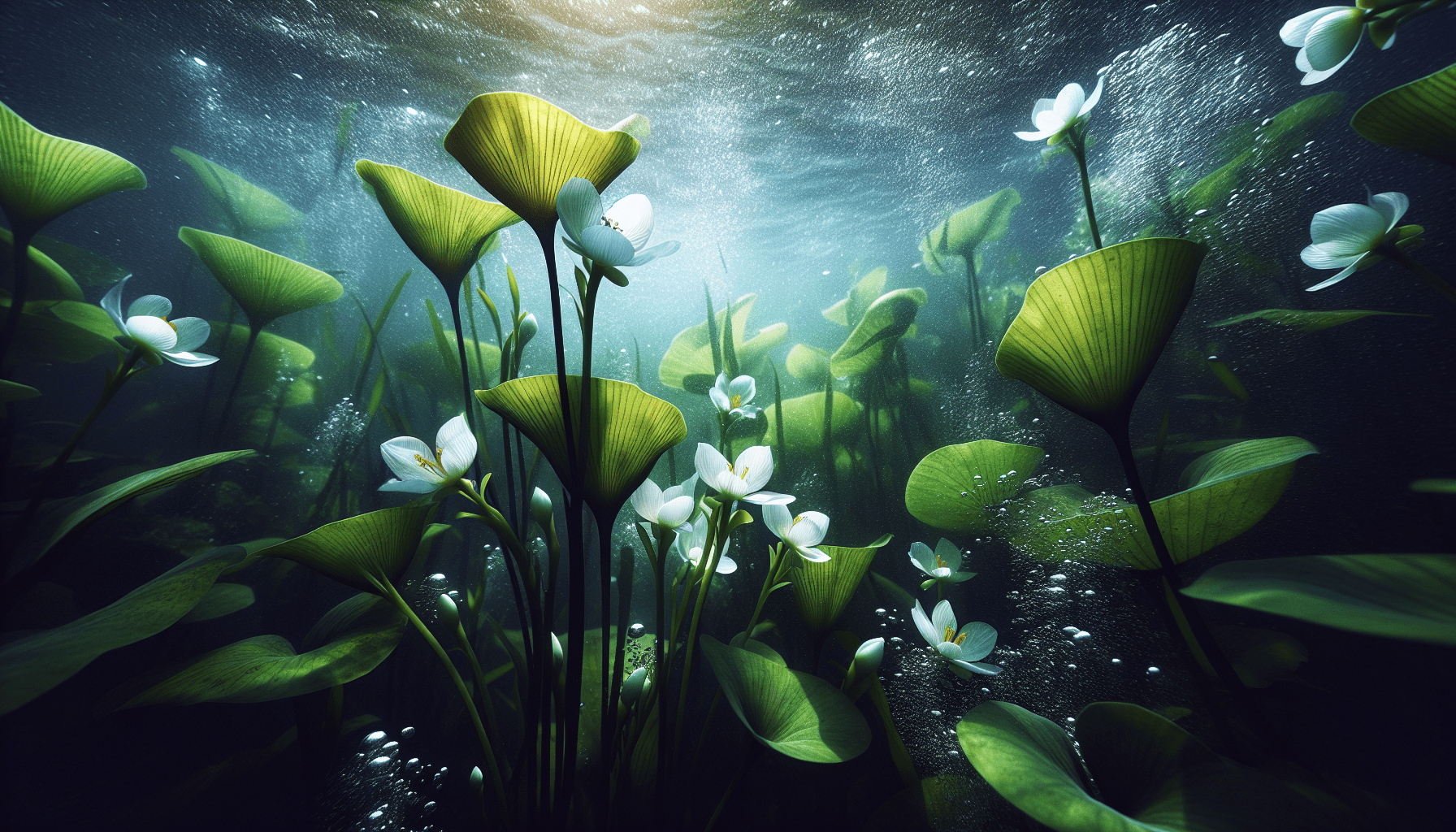In the realm of aquatic flora, Sagittaria longiloba, commonly referred to as an aquatic weed, maintains a considerable stature. Embarking on an exploration of the subject matter, the article delineates the intricate aspects of this unique plant species, elucidating upon its characteristics, its ecological affiliations, and its impact within its environments. Brimming with scientific inquiry, botanical knowledge, and profound ecological context, the article sheds intriguing light on this often neglected realm of aquatic botany. The reader can expect to significantly broaden their understanding of the fascinating world of water-loving plants, and particularly, the enigmatic species that is Sagittaria longiloba.

Definition of Aquatic Weed Sagittaria Longiloba
Sagittaria Longiloba, commonly known as the Long-lobed Arrowhead, is a species of flowering plant in the water plantain family, Alismataceae. This aquatic weed, characterized by arrowhead-shaped leaves and a robust white rhizome, grows predominantly in shallow aquatic environments.
Characteristics of Sagittaria Longiloba
Sagittaria Longiloba is characterized by its broad, sagittate (arrowhead-shaped) leaves, hence its name. The leaves often have long petioles that rise above the water surface. The plant’s flowers are pure white, borne on erect stems much taller than the leaves. They possess three broad petals and develop into achenes – a small, hard fruit containing a single seed.
Classification Levels of Sagittaria Longiloba
The scientific classification of Sagittaria Longiloba places it in the Plantae kingdom, under the Angiosperms clade. It belongs to the class Alismatales, within the order Alismataceae. Its genus is Sagittaria, a Latin term meaning “arrow,” which symbolizes its leaf shape.
Common Names of Sagittaria Longiloba
Beyond its scientific name and the Long-lobed Arrowhead, Sagittaria Longiloba is also commonly called the Large-Bract Arrowhead due to its large bracteate inflorescence.
History and Origin of Sagittaria Longiloba
Discovery of Sagittaria Longiloba
The discovery history of Sagittaria Longiloba is not well-documented. However, it is known that it was first found in North America and has since become naturalized in other regions, particularly southwestern Europe.
Distribution and Geographical Spread of Sagittaria Longiloba
Sagittaria Longiloba is native to North America but has expanded its geographical reach over the centuries. Today, it can be spotted in Europe, most commonly in the southwest region, and in certain parts of Asia.
Habitats of Sagittaria Longiloba
Ideal Conditions for Growth
Sagittaria Longiloba prefers shallow aquatic environments with calm, slow-moving water. It thrives best in sandy or silty substrate, under temperate conditions with plenty of sunlight. Notably, the plant can be quite adaptable, tolerating both fresh and brackish water.
Common Locations of Sagittaria Longiloba
In addition to its native habitats in North America, Sagittaria Longiloba is often found in various parts of Europe and Asia, particularly in regions with large bodies of calm water, such as lakes, ponds, and slow-moving rivers.

Physiology of Sagittaria Longiloba
Growth and Development Stages
Like many aquatic plants, Sagittaria Longiloba undergoes diverse growth stages – from budding to flowering to seeding – throughout its life cycle. Initially, the plant sprouts from the white rhizome buried in the substrate. Over time, it matures, producing arrowhead-shaped leaves that sprout above the water line, and ultimately yields white flowers.
Leaf and Root System Details
Sagittaria Longiloba boasts arrowhead–shaped leaves that are directly attached to long petioles. These leaves can either float on the water surface or rise above it. The root system is robust and extensive, comprising a white fibrous rhizome that anchors the plant to the substrate.
Flowering and Reproduction Processes
Sagittaria Longiloba produces white flowers that are organized in a whorled, branched inflorescence. Each flower carries both male and female organs for bisexual reproduction. After successful pollination, the flowers turn into hard achenes, bearing a single seed that propagates the plant species.
Ecological Impact of Sagittaria Longiloba
Effects on Aquatic Ecosystems
Sagittaria Longiloba plays a significant role in maintaining the ecological balance of its native habitats. Its broad leaves provide shelter for small aquatic animals and its flowers attract various pollinators. However, in non-native environments, it can be an aggressive invader, outcompeting local plant species and disrupting the ecosystem.
Interactions with Other Aquatic Species
Sagittaria Longiloba serves as a food source for ducks and other waterfowl. In addition, some invertebrates and small fish rely on the plant for shelter. However, when the plant becomes invasive, it can hinder the growth and development of native aquatic species.
Economic Impact of Sagittaria Longiloba
Impact on Fishing Industry
The invasive spread of Sagittaria Longiloba can impact the fishing industry negatively. Dense growth of this aquatic weed may hinder fishing activities by making waterways inaccessible.
Impact on Aquaculture
Aquaculture can be affected negatively by Sagittaria Longiloba. Large populations of this plant can reduce water flow, deplete nutrient levels, and lower oxygen levels due to nighttime respiration, thereby undermining the sustainability of fish farming.
Impact on Waterways and Navigation
Dense infestations of Sagittaria Longiloba can impede water flow and navigation, posing significant challenges to boating and other recreational activities. Wedged boat propellers and disrupted water-related activities can lead to significant economic losses in affected regions.
Methods to Control Aquatic Weed Sagittaria Longiloba
Mechanical Control Methods
Mechanical methods are often employed to control the spread of Sagittaria Longiloba. These techniques may involve the manual removal of the aquatic weed or the use of special equipment to cut or uproot the plants. However, these methods can be labor-intensive and require consistent effort to prevent regrowth.
Biological Control Methods
Biological control of Sagittaria Longiloba is often achieved through the introduction of natural enemies, such as specific insects or grazing animals, into the plant’s habitat. However, the potential impact on non-target species and overall ecosystem health must be carefully considered.
Chemical Control Methods
Chemical control involves using specific herbicides to manage the growth of Sagittaria Longiloba. While this method can be quite effective, it carries the risk of harming other aquatic life forms and must be used judiciously.
Benefits of Sagittaria Longiloba
Role in Aquatic Ecosystems
In its native habitats, Sagittaria Longiloba plays a crucial role in aquatic ecosystems. It provides shelter for small aquatic animals, contributes to nutrient cycling and water purification, and supports the food chain by providing food for waterfowl.
Potential Uses in Aquatic Gardening
Sagittaria Longiloba, with its arrowhead-shaped leaves and elegant white flowers, can be an attractive addition to ponds and water gardens. It can play a complementary role in creating an aesthetically appealing aquatic environment.
Threats and Concerns Regarding Sagittaria Longiloba
Invasive Potential
While Sagittaria Longiloba is part of a balanced ecosystem in its native habitats, it has the potential to become invasive when introduced to non-native environments. It can override other aquatic plants, disrupting local biodiversity and leading to an imbalance in the ecosystem.
Damage to Infrastructures
Sagittaria Longiloba can grow vigorously and form dense clusters that block waterways, potentially damaging local infrastructure by increasing sedimentation and impeding water flow.
Effect on Biodiversity
The invasive behavior of Sagittaria Longiloba can influence local biodiversity. By overpowering native plant species, this aquatic weed can alter habitats, threatening the survival of local fauna that rely on these native plants.
Future Research and Studies on Sagittaria Longiloba
Potential Areas of Study
The spread of Sagittaria Longiloba and its impact on local ecosystems represent potential areas for future research. Studies aimed at understanding its growth habits, optimal cultivation conditions, and effective control measures could provide valuable insights.
Relevance of Research
Researching Sagittaria Longiloba is crucial. By understanding its growth behavior, habitat requirements, and ecological impact, scientists can devise strategies to mitigate its invasive potential, protect native aquatic flora, and preserve biodiversity.
Potential Benefits of Research
The future work in studying Sagittaria Longiloba could lead to significant breakthroughs in aquatic weed management. It could also offer new perspectives on invasive species control, preserving biodiversity, and maintaining healthy aquatic ecosystems. Besides, research can also uncover possible benefits of Sagittaria Longiloba, such as its use in water purification, stormwater management, and aesthetic aquatic landscaping.